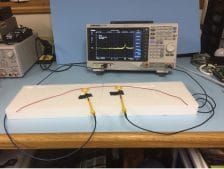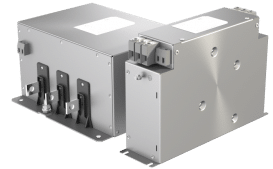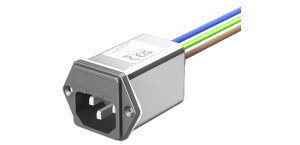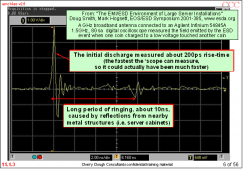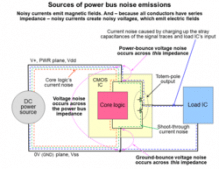“If you’re not making mistakes, then you’re not doing anything.” — John Wooden Over the years, I have seen several things that make me scratch my head. Many of them are things I have done (there, I admitted it). I would like to look at these situations to (maybe) help not to make the same mistakes. So, to be clear: Do not do these things. Concerning Shielding One would … [Read more...]
EMC Confidence Checking
I was recently working with a manufacturer of stand-alone ticket machines, who had big problems with Ethernet-related emissions. Long story short – it was the Ethernet hub they had incorporated in their machine. They had assumed that all CE-marked Ethernet hubs would be equally good for EMC, and they had several different types lying around their design department. We tested … [Read more...]
Mains Harmonic Current Emissions are Always Bad – It is Risky to Rely on the Limits or Exclusions in the Standards
Many (perhaps all) of EMC standards that are listed under the EMC Directive, that set limits for mains harmonic emissions, have exclusions (‘let-outs’) for certain types of equipment, especially: (these examples are from IEC/EN 61000-3-2 Ed.5:2018) Lighting equipment with a rated power of less than but not equal to 5W Equipment with a rated power of 75W or less, e.g. … [Read more...]
Key Points to Remember While Choosing PCB Assembly Company
Once you have designed a PCB and have completed everything that needs to be done before the assembly process, you would require a PCB assembly company to assemble your PCB without any problems. After all, you've been working considerably hard to assemble the layout and the design of the PCB. You would want to be convinced that your PCB gets well-assembled. To ensure that the … [Read more...]
Review: EMI Devices Harmonic Comb Generator
Harmonic comb generators are handy tools for validating open area test sites or semi-anechoic chambers and I've written extensively on how to use these for various other applications (see References). Harmonic comb generators produce a range of narrow band harmonics that are typically very stable in amplitude and frequency. One of the major uses is to position one in place … [Read more...]
Cadence Announces Full DRAM Verification Solution for Automotive, Data Center, and Mobile Applications
SAN JOSE, Calif.— Cadence Design Systems, Inc. (Nasdaq: CDNS) today announced a new DRAM verification solution, allowing customers to test and optimize system-on-chip (SoC) designs for data center, consumer, mobile and automotive applications. Using the full DRAM verification solution, which delivers up to 10X increased verification throughput, customers can quickly and … [Read more...]
FN2220 | EMC Filter for EV Fast Charging
The fast adoption of electric vehicles (EV) was followed by an increased demand for charging stations. To top up the car when traveling, new generations of high-power charging stations are being developed. As a result, as a leader in the field of electromagnetic compatibility, we provide you with the right solution: our EMC-filter FN2220 for fast EV charging. Are you … [Read more...]
FN9260 & FN9262 – IEC Inlet Filters With Wire Leads
Following a strong demand in the market - as an international leading company in the field of electromagnetic compatibility - we provide more connection options for the existing FN9260 and FN9262 filter series. Exceptional conducted attenuation performance. Option with Stranded Wire Leads The option with stranded wire leads not only comes with a shorter housing … [Read more...]
ESD Testing Needs to Change to Reflect Real-Life
Semiconductor die shrinking means that 0.7ns risetimes are now too slow Electrostatic discharges in the real world cover a very wide range: from relatively slow high-voltage events (say, > 1kV peak) to extremely fast low-voltage events (say, < 1kV peak). The figure shown is of the transient field radiated by a micro-gap discharge between two coins – more on this … [Read more...]
Ground / Power Bounce Cause Noise Emissions From All IC Pins
Ground and power bounce are often ignored as sources of CM noise emitted from all integrated circuit (IC) pins, even if they are static inputs or outputs, digital or analogue, and even sometimes emitted as radiated noise directly from the body of the IC (especially when its physical structure resonates). CMOS ICs use ‘totem-pole’ logic switching gates that momentarily short … [Read more...]
- « Previous Page
- 1
- 2
- 3
- 4
- …
- 77
- Next Page »




